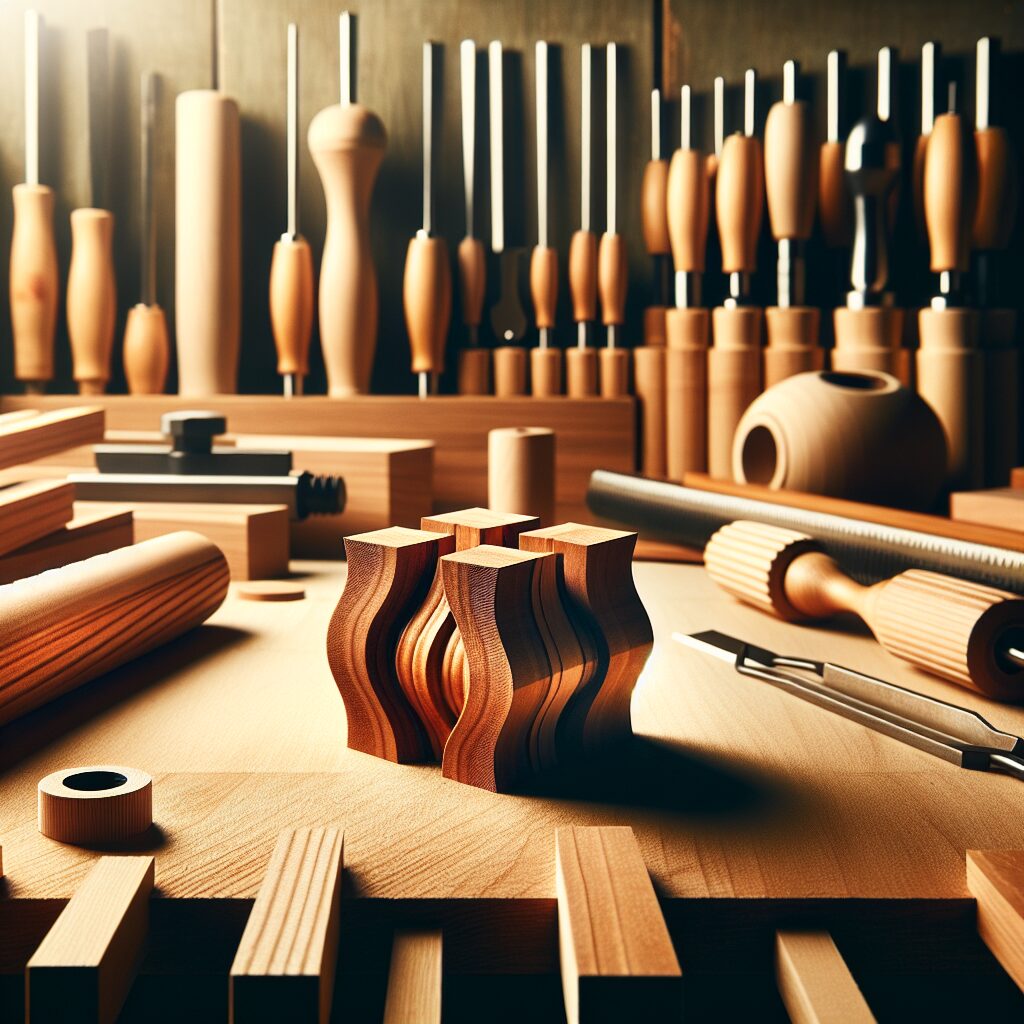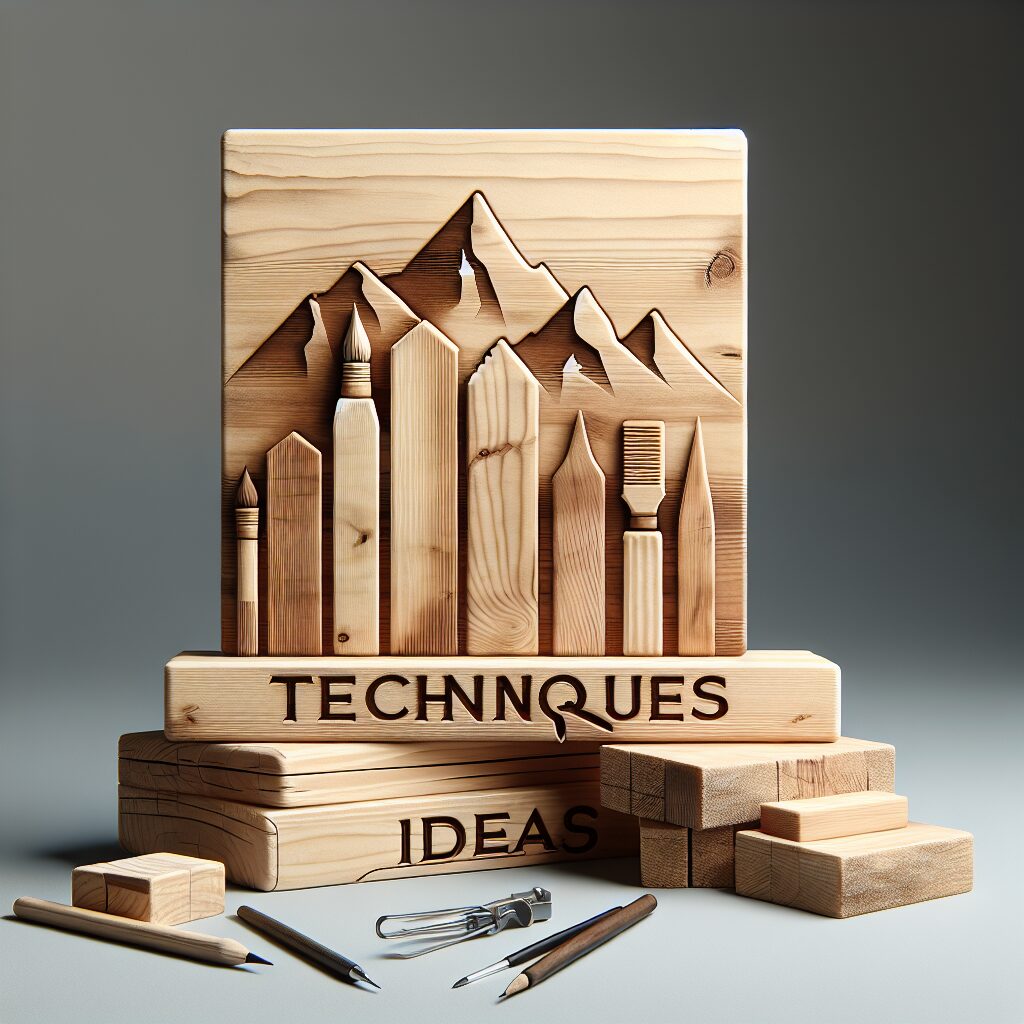Woodturning transforms ordinary wood into beautiful objects. For beginners, mastering woodturning basics can be exciting and fun. The craft involves shaping wood as it rotates on a lathe. This guide provides valuable tips to help you turn your first project. With practice, you’ll create beautiful turnings in no time.
Introduction to Woodturning: Getting Started with the Basics
The idea behind woodturning basics has remained unchanged for centuries, though tools and techniques have evolved. Many find that doing woodturning with their hands is therapeutic and fun. The introduction to woodturning should be approached with willingness to learn through doing. You should read about safety practices before starting. The basics include understanding your equipment and developing proper technique. The learning process is gradual but rewarding for woodturners.
Choosing the Right Wood for Your Turning Projects
Selecting appropriate wood is fundamental to successful projects. Different types offer varying characteristics that affect the final shape. When selecting a blank for your project, consider grain pattern and potential defects. Green wood is easier to turn but will shrink as it dries. The size of your blank should match your intended project. You should read about wood properties to make informed choices. Many woodturners enjoy selecting the perfect blank.
Essential Woodturning Tools for Beginners
Having the right tool is crucial for success. Essential woodturning tools include gouges, scrapers, and parting tools. A roughing gouge transforms a square blank into a cylindrical shape. The proper grip on your tool handle is essential for control and safety. The tool rest provides support for your cutting tools. Beginners should start with basic woodturning tools before expanding their collection. The grip technique affects your results significantly.
Understanding Your Lathe: Parts and Functions
The lathe is the centerpiece of woodturning. A typical wood lathe consists of a headstock, tailstock, tool rest, and lathe bed. The headstock houses the spindle, which rotates the wood. The tailstock provides support for the opposite end. Speed control is another crucial aspect – different projects require different rotation speeds. Read the manual to become familiar with your equipment. The lathe bed quality affects stability during turning. The lathe bed must be level for best results.
Setting Up Your Tool Rest for Successful Turning
The tool rest directly affects your turning success. Proper setup makes the difference between smooth cuts and frustrating catches. The height should be set slightly below the centerline of your workpiece. The distance between the tool rest and your workpiece should be minimal to provide maximum support. Before starting, always rotate the workpiece by hand to ensure it clears the tool rest. The tool rest position may need adjustment as you turn.
Mastering the Tool Rest for Better Control
When using the tool rest effectively, your hands should work together – one against the tool rest for stability. This grip provides control, allowing for precise cuts. Many beginners struggle with maintaining consistent contact between their tool and the tool rest throughout a cut. The height affects the cutting angle significantly. Practice will improve your technique over time. The tool rest is fundamental to successful woodturning basics.
Woodturning Safety Tips and Best Practices
Safety should always be your top priority. Always wear eye protection to guard against flying chips. Dust protection is also essential, as wood dust can cause respiratory issues. Before starting, check that your workpiece is securely mounted and all components are tight. Begin turning at a lower speed, especially with unbalanced pieces. These tips will help ensure a safe and enjoyable experience. Woodturning basics include proper safety procedures.
Basic Woodturning Techniques for Beginners
Fundamental techniques include roughing, shaping, smoothing, and parting. Roughing removes the corners of a square blank to create a cylinder. The process of shaping involves creating the desired form. Using parting tools requires precision and control. Focus on developing a light touch and letting the tool do the work rather than forcing it through the wood. The technique you choose affects the final appearance. Woodturning basics include mastering these fundamental techniques.
Spindle Turning: Learning the Fundamentals
In spindle turning, the grain runs parallel to the lathe bed. This orientation makes the wood easier to turn. Common spindle projects include table legs and tool handles. The basic cuts include the planing cut, bead, cove, and V-cut. When turning spindles, the workpiece is typically mounted between centers. The skills learned transfer well to other types of turning, making it excellent for beginners. Spindles can vary greatly in complexity and design.
Essential Tips for Spindle Turning Success
Always ensure your tool is sharp – dull tools tear the wood fibers rather than cutting them cleanly. The tool rest height is crucial – it should be set just below the centerline of your workpiece. Always cut “downhill” or with the grain whenever possible. Start at a moderate speed and adjust based on the diameter of your spindles. Practicing basic cuts on scrap wood builds confidence and skills. Spindle turning requires attention to symmetry and proportion.
How to Turn Your First Woodturning Project
Start with something simple that allows you to practice basic techniques. A small project like a tool handle makes an excellent first choice. Begin by selecting an appropriate blank – choose a medium-density hardwood that turns predictably. The process should be approached methodically, starting with roughing to round, then working on the basic shape. Take your time and focus on making clean cuts rather than rushing. Read instructions carefully before beginning your project. Woodturning basics come together in your first project.
Beginner-Friendly Woodturning Projects
Several projects are well-suited for beginner woodturners looking to develop their skills. Small spindles offer excellent practice while creating something useful. Pens are another popular beginner project that can be completed quickly. Simple bowls allow new woodturners to experience both spindle and face grain turning techniques. Many woodturners recommend starting with projects that can be completed in a single session to maintain momentum and interest. The idea is to build skills gradually through practice.
Sharpening and Maintaining Your Woodturning Tools
Keeping your tool sharp is essential for both safety and quality results. A grinder is the most common tool used for sharpening. The process involves carefully grinding the bevel to restore the cutting edge. Different tools require different sharpening techniques – gouges need to maintain their curved profile, while parting tools have straight edges. Learning to recognize when a tool needs sharpening is an important skill. A grinder with appropriate wheels is essential equipment. A grinder should be set up properly for best results.
Using Parting Tools in Woodturning
Parting tools play a specific but essential role in the woodturning process. These specialized parting tools are designed primarily for separating your finished work from waste material. They feature a narrow blade with a pointed tip for precise cutting of grooves and tenons. Keep the tool perpendicular to the lathe bed and level with the centerline of your workpiece. Many use parting tools to establish maximum diameter or create reference points. Parting tools should be kept especially sharp for clean cuts.
Common Woodturning Mistakes and How to Avoid Them
Even experienced woodturners occasionally make mistakes. One frequent mistake is working with dull tools – always ensure your tool is sharp before starting. Another common error is improper tool rest height, which can lead to catches. Many beginners apply too much pressure when cutting, which can lead to dig-ins. Turning at inappropriate speeds is another common mistake. Read about common mistakes to avoid repeating them. Doing research before starting helps prevent errors. The idea is to learn from others’ experiences.
Taking Your Woodturning Skills to the Next Level
As you become comfortable with the woodturning basics, you may want to explore more advanced techniques. Developing your skills might involve learning specialized techniques like hollow turning. Many find that joining a local club provides valuable opportunities for learning. The process of advancing often involves investing in additional tools as your interests expand. Experimenting with different wood species can open new creative possibilities. Skills develop gradually with consistent practice. Skills in design complement technical turning abilities.
Advanced Techniques for Experienced Woodturners
As woodturners gain experience, many explore advanced techniques that expand their creative possibilities. Hollow form turning involves creating vessels with small openings and hollowed interiors. Segmented turning, where the workpiece is constructed from multiple pieces glued together, allows for complex designs. Multi-axis turning creates asymmetrical forms by remounting the workpiece on different centers. Thread chasing is a traditional technique for cutting wooden threads, used for creating lidded boxes. These advanced techniques produce stunning turnings that showcase both technical skill and artistic vision.






